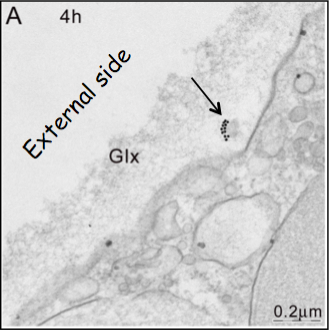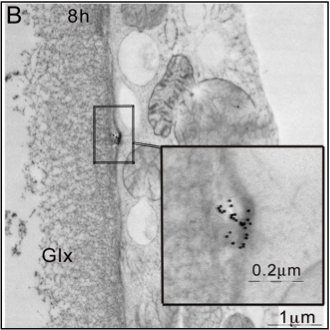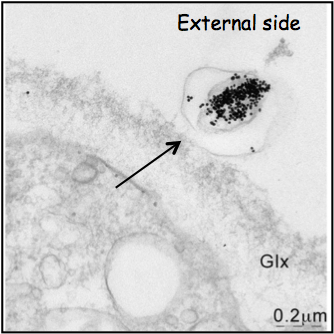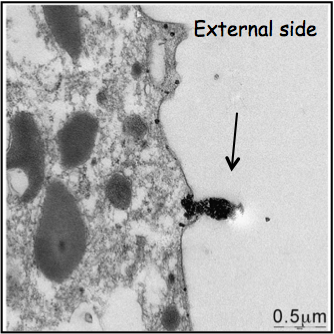NanoBiomolecular Group
Istituto di Scienze Applicate e Sistemi Intelligenti “E.Caianiello”
CONSIGLIO NAZIONALE DELLE RICERCHE




NanoBiomolecular Group
Istituto di Scienze Applicate e Sistemi Intelligenti “E.Caianiello”
CONSIGLIO NAZIONALE DELLE RICERCHE



Mechanisms of membrane trafficking
“Imaging inwards and outwards trafficking of gold nanoparticles in whole animal”
This research aims to get deep knowledge on the mechanisms governing the interaction of gold nanoparticles (AuNPs) with living systems, which may help the design and development of new platforms for nanomedicine.
We characterized the dynamics and kinetics of the events occurring at the bio/non bio interface, from the first interaction nanoparticle/cell membrane, to the intracellular trafficking and final extracellular clearance. As experimental model we used Hydra vulgaris, as an amenable system introduced by our group to address basic issues in nanoscience.
We present ultrastructural evidences of several ongoing mechanisms underlying inwards and outwards trafficking of AuNP tailored with positively charged groups.


INWARDS


From a time course (4h-48h) TEM imaging a highly dynamic picture emerged in which AuNPs are rapidly internalized, recruited into vacuoles/ endosome, which then fuse, divide, compact and sort out the internalized material either to storage vacuoles or lysosomes for exocytosis.
Beside classical routes, new portals of entry/exit were observed
OUTWARDS


Several outward routes may take place: (i) through exosomes (possibly derived by late endosomes), direct membrane exocytosis of NP-loaded vesicles, (iii) fusion of lysosomeswith cell membrane

Publication
V.Marchesano, Y.Hernandez, W.Salvenmoser, A.Ambrosone, A.Tino, B.Hobmayer, JM de la Fuente and C.Tortiglione Imaging inwards and outwards trafficking of gold nanoparticles in whole animals. ACS Nano. 2013 Mar 26;7(3):2431-42.
Collaborations
Jesus de la Fuente, Instituto de Nanociencia y Materiales de Aragón (INMA), Zaragoza, Spain
Bert Hobmayer- Zoological Institute, Innsbruck, Austria
Valentina Marchesano, Istituto Scienze Applicate e Sistemi Intelligenti, CNR, Pozzuoli
Go to: NANOMEDICINE